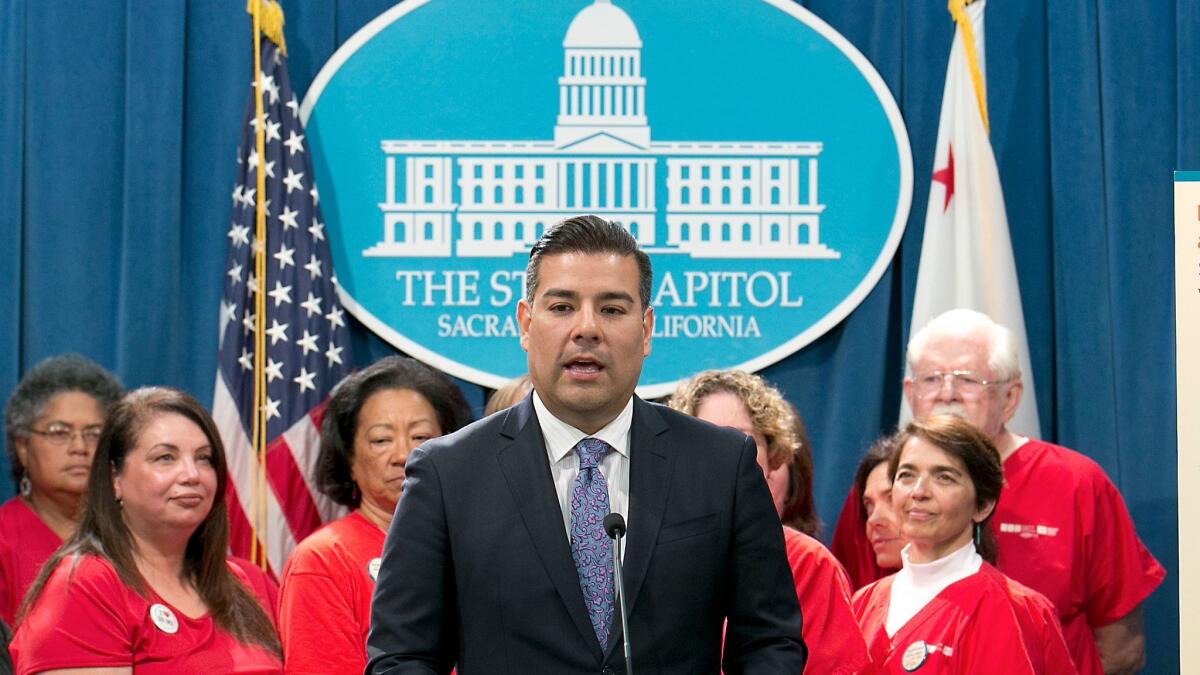Editorial: If there’s a smart path to single payer healthcare in California, we haven’t found it yet

California Assembly Speaker Anthony Rendon did the state a favor late Friday afternoon when he slammed the brakes on a fast-moving Senate bill to create a single-payer healthcare system in California. As should be obvious from the flailing Republican efforts in Washington, it’s easy to talk about drastic changes in the way healthcare is financed, but hard to make those changes work without hurting many of the people you’re trying to help.
Dubbed the Healthy California Act, SB 562 by Sens. Ricardo Lara (D-Bell Gardens) and Toni Atkins (D-San Diego) would create a first-in-the-nation state insurance program to replace all private insurers and, if possible, public programs as well. Its laudable goal is to make healthcare in California universally available and more cost-effective by eliminating the complexity and costs imposed by the current system of multiple private and public insurers.
SB 562, which the California Nurses Assn. sponsored, ducks the question of costs entirely.
It’s understandable why lawmakers would look for a way to shield their constituents from the disastrous coverage losses that are sure to happen if the congressional bills to “repeal and replace” the ACA and slash Medicaid become law. But the last state to try to create a single-payer system — Vermont — abandoned the effort in 2014 because of the huge projected cost to taxpayers.
SB 562, which the California Nurses Assn. sponsored, ducks the question of costs entirely, saying simply that the system it would create cannot go into effect until the state finds a way to pay for it — as if the cost issue were somehow separate from the question of how to run a single-payer system. It is, in fact, integral. Just look at Medi-Cal, the state’s $103-billion Medicaid program, which placed so much pressure on the state budget that lawmakers cut back services, eligibility and arguably the quality of care provided. The proposed single-payer system would dwarf the size of Medi-Cal.
The nurses union has countered with a study it financed showing that a single-payer system would actually save the state money. The public should be no less skeptical of this research than of any single study financed by any other stakeholder group.
But the cost issue is just the most obvious one posed by the proposal. Others revolve around the question of what care the state will pay for — the bill says whatever is “medically necessary,” but it doesn’t define what that means — and how much the state will pay for it. If the state is the only entity negotiating with doctors and hospitals, how does it pay enough to keep them here and afloat while still doing more than the current system to hold down the rapid growth in medical costs?
How would the state avoid becoming the go-to destination for anyone outside of California who needs care but can’t afford it? How would it integrate people who are eligible for Medicare and employer-provided retiree benefits for which they’d already paid?
These are all difficult questions that involve important policy choices. Yet the measure — which is barely 35 pages long — is so light on detail, it leaves those issues unresolved. And it blitzed through the Senate after only two committee hearings. That’s not legislating, that’s posturing. There’s an enormous amount of legislative spade work to be done to determine whether single payer is the right direction for California, and if so, to design a feasible system. If lawmakers really wants to pursue this, they need to get serious.
Follow the Opinion section on Twitter @latimesopinionand Facebook
More to Read
A cure for the common opinion
Get thought-provoking perspectives with our weekly newsletter.
You may occasionally receive promotional content from the Los Angeles Times.






